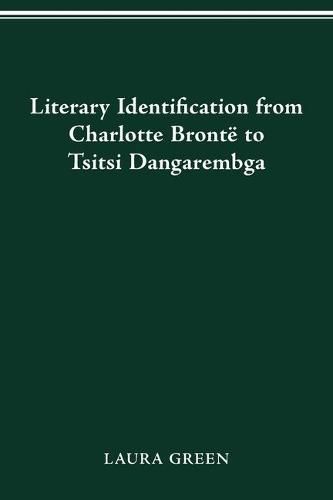Readings Newsletter
Become a Readings Member to make your shopping experience even easier.
Sign in or sign up for free!
You’re not far away from qualifying for FREE standard shipping within Australia
You’ve qualified for FREE standard shipping within Australia
The cart is loading…






This title is printed to order. This book may have been self-published. If so, we cannot guarantee the quality of the content. In the main most books will have gone through the editing process however some may not. We therefore suggest that you be aware of this before ordering this book. If in doubt check either the author or publisher’s details as we are unable to accept any returns unless they are faulty. Please contact us if you have any questions.
Literary Identification from Charlotte Bronte to Tsitsi Dangarembga, by Laura Green, seeks to account for the persistent popularity of the novel of formation, from nineteenth-century English through contemporary Anglophone literature. Through her reading of novels, memoirs, and essays by nineteenth-, twentieth-, and twenty-first-century women writers, Green shows how this genre reproduces itself in the elaboration of bonds between and among readers, characters, and authors that she classifies collectively as literary identification. Particular literary identifications may be structured by historical and cultural change or difference, but literary identification continues to undergird the novel of formation in new and evolving contexts. The two nineteenth-century English authors discussed in this book, Charlotte Bronte and George Eliot, established the conventions of the novel of female formation. Their twentieth-century English descendants, Virginia Woolf, Radclyffe Hall, and, Jeanette Winterson, challenge the dominance of heterosexuality in such narratives. In twentieth- and twenty-first-century narratives by Simone de Beauvoir, Jamaica Kincaid, and Tsitsi Dangarembga, the female subject is shaped not only by gender conventions but also by colonial and postcolonial conflict and national identity.. For many contemporary critics and theorists, identification is a middlebrow or feminized reading response or a structure that functions to reproduce the middle-class subjectivity and obscure social conflict. However, Green suggests that the range and variability of the literary identifications of authors, readers, and characters within these novels allows such identifications to function variably as well: in liberatory or life-enhancing ways as well as oppressive or reactionary ones.
$9.00 standard shipping within Australia
FREE standard shipping within Australia for orders over $100.00
Express & International shipping calculated at checkout
This title is printed to order. This book may have been self-published. If so, we cannot guarantee the quality of the content. In the main most books will have gone through the editing process however some may not. We therefore suggest that you be aware of this before ordering this book. If in doubt check either the author or publisher’s details as we are unable to accept any returns unless they are faulty. Please contact us if you have any questions.
Literary Identification from Charlotte Bronte to Tsitsi Dangarembga, by Laura Green, seeks to account for the persistent popularity of the novel of formation, from nineteenth-century English through contemporary Anglophone literature. Through her reading of novels, memoirs, and essays by nineteenth-, twentieth-, and twenty-first-century women writers, Green shows how this genre reproduces itself in the elaboration of bonds between and among readers, characters, and authors that she classifies collectively as literary identification. Particular literary identifications may be structured by historical and cultural change or difference, but literary identification continues to undergird the novel of formation in new and evolving contexts. The two nineteenth-century English authors discussed in this book, Charlotte Bronte and George Eliot, established the conventions of the novel of female formation. Their twentieth-century English descendants, Virginia Woolf, Radclyffe Hall, and, Jeanette Winterson, challenge the dominance of heterosexuality in such narratives. In twentieth- and twenty-first-century narratives by Simone de Beauvoir, Jamaica Kincaid, and Tsitsi Dangarembga, the female subject is shaped not only by gender conventions but also by colonial and postcolonial conflict and national identity.. For many contemporary critics and theorists, identification is a middlebrow or feminized reading response or a structure that functions to reproduce the middle-class subjectivity and obscure social conflict. However, Green suggests that the range and variability of the literary identifications of authors, readers, and characters within these novels allows such identifications to function variably as well: in liberatory or life-enhancing ways as well as oppressive or reactionary ones.